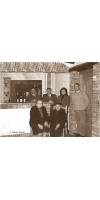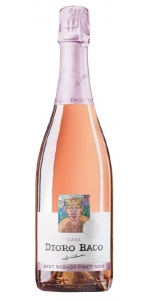Wine from Bodegas Escudero

The Escudero family has been making wine and growing grapes, for four generations, in the rugged, semi-desert foothills around Grávalos in the southwestern corner of the Rioja Baja region. Over the past few decades, the 4th generation of Escudero siblings - led by Bordeaux-trained winemaker Amador - have transformed the small family "bodega" into a major Rioja wine producer.
Operating from the small Grávalos facility, Amador realized that some of his vineyards offered the potential to do something better (and different). These old vineyards, some over 100 years planted in the old fashioned "vidau" style offered the kind of raw material needed to make a modern-style premium wine - a Rioja with a difference. ["Vidau" is a mixed variety vineyard - a field blend ready to pick.] The vineyards include Tempranillo, Mazuelo, Graciano & Garnacha. They have 173 hectares (427 acres) under vine, with an annual production of 166,600 9-liter cases.
The grapes come from the property owned vineyards in the municipality of Grávalos, south of Monte Yerga at the foothills of the “Cordillera Ibérica” at an altitude between 700–800 meters above sea level. A very high located area where you obtain fresh wines with little alcohol content and with very fine and elegant aromas.
The Pinot Noir variety originating in Burgundy is one of the three most important varieties in Champagne. Harvested around the second and third week of September. The collection of the grapes is done manually, selecting the grapes, preventing any deteriorated grapes from reaching the press or not complying with the quality required to elaborate our cavas.
Raspberry pink with steely glare. Fine bubble that forms a small rosary of slow evolution. Fruity aromas of strawberry, raspberry and flowers (rose petals). Pleasant and potent in the mouth with light acidity and a bubble very well integrated. Persistent and elegan
Review:
Wine Enthusiast Magazine (December 2023), 94 pts
- back
Selected Options
Wineries
Categories
Pricing
Countries
Regions
Grape Types
Wineries
Organic/Free Shipping
Alejandro Bulgheroni Lithology Cabernet Sauvignon is made from 100 percent Cabernet Sauvignon.
We only produced a scant 50 cases of this wine this year, far too small an amount considering how great it turned out. There’s that typical saturated to the rim deep purple color, with intense cassis, herb, and milk chocolate, bricks and forest floor, black plum pudding aromas. In the mouth, there’s a great balance, with notable oak and vanilla notes intertwined with dense black fruits. It’s an opulent and plush style, yet finishes with sweet grippy tannins.
A fresh, wild, and savory expression with vibrant acidity and an elegant structure. Earth-laced fruit aromas of blackberry bramble, dark cherry, and huckleberry seamlessly intertwine with savory hints of curry leaves and lobster mushrooms, accented by subtle notes of dried orange peel and baking spices. Earthy and floral elements—forest floor, conifer needles, and rose hips—carry through to the palate, beautifully integrated with effusive raspberry and cherry notes, leading to a long, spicy finish.
This impressive Pinot is polished and detailed, offering dynamic flavors of raspberry and blueberry, with mineral and brown baking spice hints that build richness toward fine-grained tannins.
#11 Wine Spectator Top 100 of 2025





